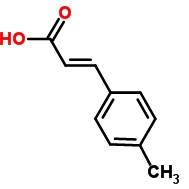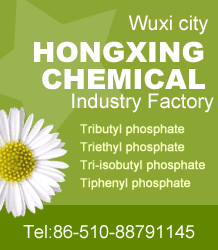4-Methylcinnamic acid
Inquiry
| Post Date: | Dec 18,2019 |
| Expiry Date: | Dec 17,2020 |
| Detailed Description: |
Cas No. :1866-39-3
Solvent:
Chloroform, Dichloromethane, Ethyl Acetate, DMSO, Acetone, etc. Description: 5-Methoxycinnamic acid is a photosensitive compound, also known as para-methoxycinnamate or O-methyl-p-coumarate, belongs to the class of organic compounds known as cinnamic acids. These are organic aromatic compounds containing a benzene and a carboxylic acid group forming 3-phenylprop-2-enoic acid. 4-Methoxycinnamic acid exists as a solid and is considered to be practically insoluble (in water) and relatively neutral. 4-Methoxycinnamic acid has been detected in multiple biofluids, such as urine and blood. Within the cell, 4-methoxycinnamic acid is primarily located in the membrane (predicted from logP). Outside of the human body, 4-methoxycinnamic acid can be found in turmeric and wild celery. This makes 4-methoxycinnamic acid a potential biomarker for the consumption of these food products. Main Applications: 1.methyl cinnamic acid is mainly used as an important intermediate in organic synthesis. 2.p-MCA exerted antihyperglycemic/hypoglycemic effect by stimulating insulin secretion from pancreas and could be developed into a new potential for therapeutic agent used in type 2 diabetic patients. 3.methyl cinnamic acid shows various pharmacologic actions such as hepatoprotective and antihyperglycemic activities, it also can stimulate insulin secretion from pancreatic β-cells by increasing Ca2+ influx via the L-type Ca2+ channels, but not through the closure of ATP-sensitive K+ channels. 4.4-Methoxycinnamic acid can strongly inhibit the diphenolase activity of mushroom tyrosinase, with the IC 50 value of 0.42 mM, and the inhibition is reversible. 5. Inhibitory effects of cinnamic acid and its derivatives on the diphenolase activity of mushroom ( Agaricus bisporus ) tyrosinase. 6. Natural products modulate Shigella-host-cell interaction. 7. Photosensitive semiconductor nanocrystals, photosensitive composition comprising semiconductor nanocrystals and method for forming semiconductor nanocrystal pattern using the same 8. Mechanisms of p-methoxycinnamic acid-induced increase in insulin secretion. 9. Protective effect of p-methoxycinnamic acid, an active phenolic acid against 1,2-dimethylhydrazine-induced colon carcinogenesis: modulating biotransforming bacterial enzymes and xenobiotic metabolizing enzymes. |
| CAS Registry Number: | 1866-39-3 |
| Synonyms: | ;4-Methylcinnamic acid,predominantly trans;(2E)-3-(4-methylphenyl)prop-2-enoic acid;(2E)-3-(4-methylphenyl)prop-2-enoate; |
| Molecular Formula: | C10H9O2 |
| Molecular Weight: | 161.1778 |
| Molecular Structure: | 
|
| Safety Description: | S24/25:; |
| Company: | Wuhan LANDMARK Industrial Co., Ltd [ China ] |
| Contact: | Halsey |
| Tel: | 18062529653 |
| Fax: | |
| Email: | Halsey.lmd@gmail.com |
-
Disclaimer statement:The information and data included above have been realized by the enterprises and compiled by the staff, and are subject to change without notice to you. The Chemnet makes no warranties or representations whatsoever regarding the facticity, accuracy and validity of such information and data. In order to ensure your interest, we suggest you chose the products posted by our gold suppliers or VIP members.


